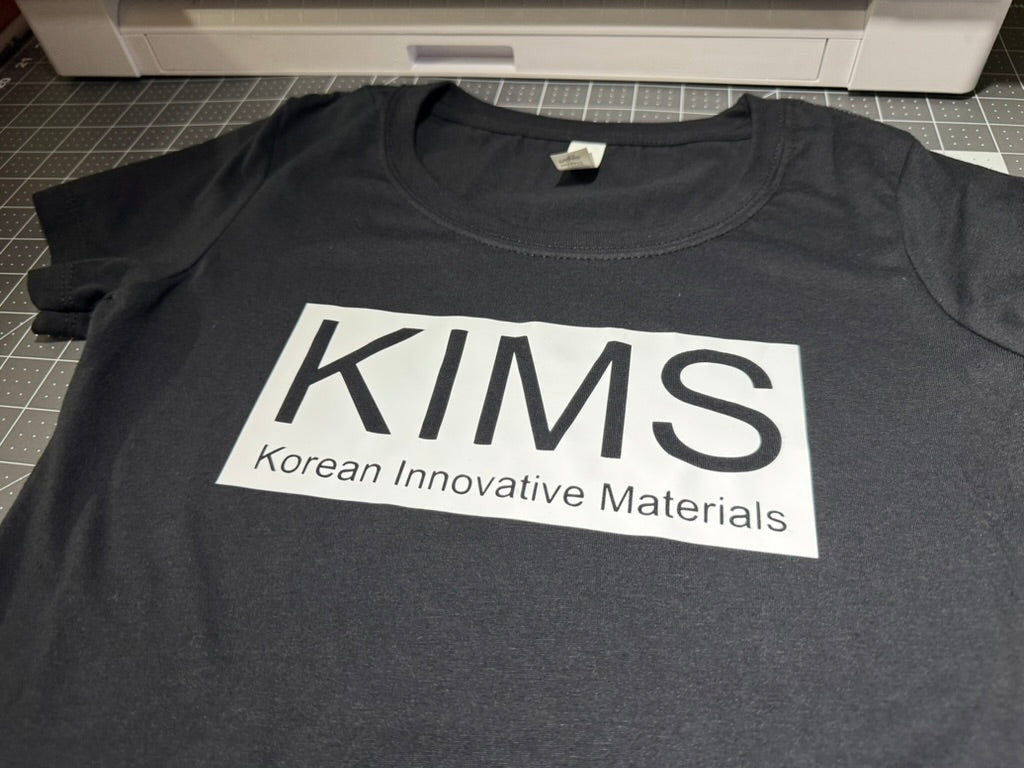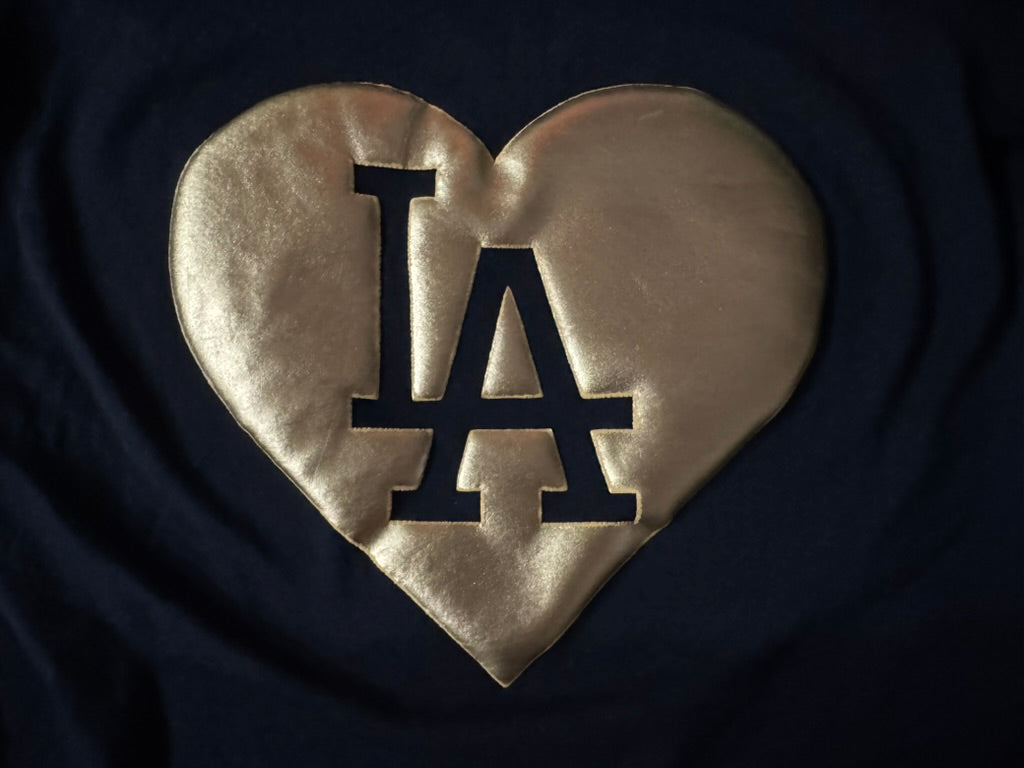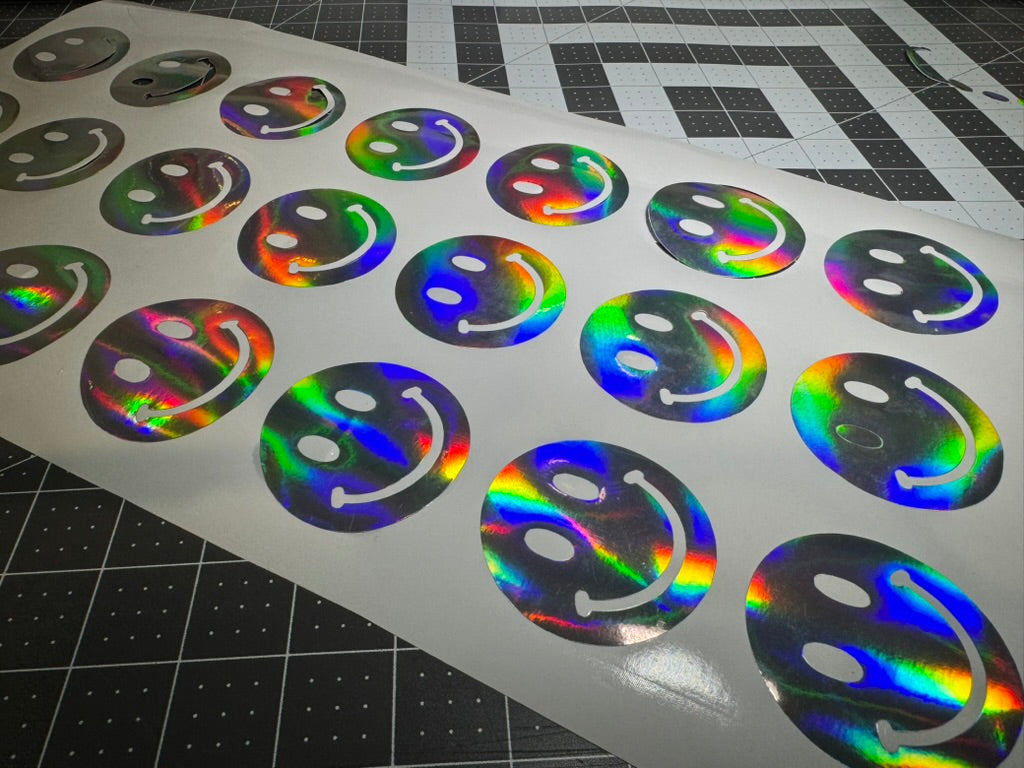Introduction
Heat transfer vinyl, often called HTV, is a common material used to apply designs to fabric and other surfaces. Many creators and small business owners use HTV to decorate t-shirts, tote bags, hats, and other promotional products.
If this is your first time looking to buy heat transfer vinyl, understanding what it is and how it works is the first step. HTV has specific qualities that make it different from other decoration methods like screen printing or sublimation.
This guide explains what HTV is, how to choose the right type, and what tools are used to apply it efficiently. It also covers specialty finishes and where to find materials that ship reliably and quickly.
What Is Heat Transfer Vinyl HTV
Heat transfer vinyl (HTV) is a material used to decorate fabric and other flat surfaces. It's made from a polyurethane (PU) base with a heat-activated adhesive on one side. The adhesive is protected by a clear carrier sheet that holds the design in place during application.
HTV differs from screen printing, direct-to-film (DTF), and sublimation printing. Instead of using ink or toner, HTV involves cutting shapes from colored vinyl sheets and applying them with heat and pressure.
The basic process involves cutting the design with a vinyl cutter, removing excess material (called weeding), placing the design on fabric, applying heat with a heat press, and peeling away the carrier sheet.
Key advantages of HTV:
-
Durability: Properly applied HTV withstands repeated washing without peeling
-
Versatility: Works on cotton, polyester, blends, and many other fabrics
-
Cost-effectiveness: Requires minimal setup, making it ideal for small orders
-
Customization: Each design can be unique with options for layering and effects
How To Choose A Professional Grade HTV
Professional-grade heat transfer vinyl is designed for consistent performance in commercial settings. Unlike craft store vinyl, professional HTV offers better cutting precision, easier weeding, and longer-lasting results.
The right vinyl choice affects production speed, final appearance, and customer satisfaction. Professional-grade materials may cost more initially but often save money by reducing waste and rework.
1. Material Composition
Most heat transfer vinyl is made from either polyurethane (PU) or polyvinyl chloride (PVC). Each type has different properties that affect how it cuts, applies, and wears over time.
Ultra-thin vinyl (1-2 mils thick) works best for detailed designs and layering multiple colors. Standard thickness (3-4 mils) provides durability for everyday wear. The carrier sheet may be tacky or non-tacky, with tacky carriers helping hold small pieces in place during weeding.
PU vs PVC comparison:
-
PU Vinyl: Thin, soft, and stretchy. Ideal for performance wear and detailed designs
-
PVC Vinyl: Thicker and more rigid. Better for bold graphics and heavy-duty applications
2. Cutting And Weeding Ease
"Easy to weed" vinyl cuts cleanly and separates from the carrier sheet without stretching or tearing. This quality saves time during production and helps preserve fine details in complex designs.
Production efficiency improves with vinyl that cuts precisely and weeds quickly. Vinyl that tears or stretches during weeding can ruin designs and waste materials.
Good quality vinyl cuts with clean edges and releases from the carrier sheet without excessive force. This allows for faster production and fewer errors, especially with intricate designs like small text or thin lines.
3. Durability And Washability
Professional-grade HTV should withstand multiple wash cycles without fading, cracking, or peeling. Commercial standards typically expect 50+ washes without noticeable deterioration.
Wash-resistant vinyl uses stronger adhesives and color-stable pigments. These materials maintain their appearance through hot water washing and high-heat drying cycles.
|
Feature |
Standard Vinyl |
Professional-Grade Vinyl |
|---|---|---|
|
Wash cycles |
10-25 |
50+ |
|
Color retention |
Moderate fade |
Minimal change |
|
Crack resistance |
May crack at folds |
Maintains flexibility |
|
Temperature tolerance |
Up to 140°F |
Up to 160°F |
4. Specialty Finishes And Effects
Specialty finishes create visual or textural effects beyond basic matte vinyl. These options allow for unique designs that can command premium pricing.
Each specialty finish has specific application requirements. Some need higher temperatures, longer press times, or special peeling techniques to achieve the desired effect.
Popular specialty finishes include:
-
Glitter HTV for sparkle and texture
-
Metallic HTV for a smooth, reflective surface
-
Reflective HTV for visibility in low light
-
Puff HTV for raised, dimensional effects
-
Holographic HTV for rainbow-like color shifts
5. Supplier Reliability
Consistent quality between orders helps maintain production standards. Variations in thickness, adhesive strength, or carrier sheet can disrupt established workflows.
Reliable shipping prevents production delays and reduces the need for excessive inventory. Suppliers with consistent stock levels and fast shipping allow businesses to order as needed rather than stockpiling materials.
Good technical support helps resolve application issues quickly. This can include guidance on cutting settings, temperature recommendations, or troubleshooting adhesion problems.
Popular Specialty Finishes For Advanced Designs
Specialty HTV creates effects that standard vinyl can't achieve. These materials add visual interest and texture to designs, helping products stand out in competitive markets.
Using specialty finishes often allows businesses to charge more for their products. Customers are willing to pay premium prices for unique visual effects that aren't available with basic materials.
Glitter HTV
Glitter HTV contains embedded reflective particles that create a sparkly surface. The vinyl is typically thicker than standard HTV and has a textured finish that catches light from multiple angles.
This vinyl is popular for cheer uniforms, dance apparel, fashion items, and holiday-themed products. The sparkly finish appeals to customers looking for decorative or celebratory items.
Glitter HTV generally requires higher temperatures (315-320°F) and firm pressure for proper adhesion. The carrier sheet is usually removed while warm, and the material should not be stretched immediately after application.
![Image placeholder: Close-up of glitter HTV applied to a dark fabric showing sparkle effect]
Metallic And Reflective HTV
Metallic HTV has a smooth, mirror-like finish that resembles foil. Reflective HTV contains microscopic glass beads or prisms that bounce light back to its source, similar to safety materials on roads.
These materials serve different purposes: metallic HTV is decorative for fashion and branding, while reflective HTV improves visibility for safety apparel, athletic wear, and outdoor gear.
Metallic vinyl typically applies at lower temperatures (285-305°F) to prevent wrinkling. Reflective vinyl may require cold peeling and should not be layered under other materials, as this reduces its reflective properties.
Puff And Dimensional HTV
Puff HTV expands when heated, creating a raised surface with a soft, foam-like texture. The vinyl starts flat but expands during the heat application process.
This effect works well for creating emphasis in logos, lettering, or design elements that need to stand out. It's commonly used in sportswear, children's clothing, and novelty items.
Puff vinyl is temperature-sensitive and requires careful application at around 305-315°F. Too much heat or pressure can cause over-expansion or flattening. The carrier sheet should be peeled while warm, and the design should not be pressed again after the initial application.
Color Changing Vinyl
Color changing vinyl reacts to environmental conditions. Heat-activated vinyl changes color with temperature variations, while solar-activated vinyl responds to UV light exposure.
These interactive materials create novelty effects for children's wear, promotional items, and specialty apparel. Some designs use color change to reveal hidden messages or transform patterns when exposed to heat or sunlight.
Application temperatures typically range from 300-310°F with medium pressure. The effect may diminish over time with repeated washing or extended exposure to triggering conditions (heat or UV light).
Steps To Cut And Apply HTV Efficiently
Following a consistent process for cutting and applying HTV helps achieve reliable results. Each step builds on the previous one, so taking care throughout the process leads to better final products.
1. Prepare Artwork And Equipment
Start with high-quality artwork in vector format when possible. Vector files (like SVG or EPS) maintain sharp edges at any size and cut more precisely than pixel-based images.
Size your design appropriately for the application surface. For t-shirts, chest designs typically range from 10-12 inches wide for adults and 6-8 inches for children.
Check that your cutting machine is clean and properly set up. Remove any debris from previous projects and ensure the cutting mat or roller system is in good condition.
Artwork preparation checklist:
-
Vector format for clean cutting (SVG, EPS, AI files)
-
Proper sizing for the target surface
-
Mirror/flip design horizontally before cutting
-
Simplify extremely detailed elements that may be too small to cut
2. Test Cut And Blade Settings
Before cutting your entire design, perform a small test cut to verify your settings. A proper cut should slice through the vinyl layer but not cut through the carrier sheet.
Adjust blade depth, pressure, and speed based on the vinyl thickness and type. Specialty vinyls like glitter or reflective often require deeper blade settings than standard HTV.
If cuts are incomplete or the carrier sheet is damaged, make small adjustments to your settings and test again before proceeding with the full design.
Optimal settings by machine type:
-
Cricut: Use "Iron-On" setting; for thicker specialty vinyls, use "More" pressure
-
Silhouette: Blade: 2-3; Force: 8-10; Speed: 5-8 depending on complexity
-
Commercial cutters: Force: 80-120g; Offset: 0.25-0.5mm; Speed: 10-30cm/s
3. Weed Small Details Carefully
Weeding is the process of removing unwanted vinyl from around and inside your design. This step requires patience, especially with intricate designs.
Use fine-point weeding tools like tweezers, hook picks, or weeding pens to remove small pieces without damaging the design. Good lighting helps you see all areas that need to be removed.
Work from the outside edges inward for most designs. For very complex designs, consider weeding smaller sections at a time to maintain control and prevent tearing.
If you're having trouble seeing what needs to be weeded, try placing light-colored vinyl on a dark surface or vice versa to increase contrast.
4. Press With Correct Temperature And Pressure
Follow the manufacturer's recommended settings for your specific vinyl type. Using the wrong temperature or pressure can cause poor adhesion or damage the vinyl.
Pre-press the fabric for 2-3 seconds to remove moisture and wrinkles before applying the vinyl. This creates a smooth, dry surface for better adhesion.
Cover the design with a protective sheet (like Teflon or parchment paper) before pressing to prevent the vinyl from sticking to the heat platen.
|
Vinyl Type |
Temperature |
Time |
Pressure |
Peel Type |
|---|---|---|---|---|
|
Standard HTV |
305°F |
10-15s |
Medium |
Warm |
|
Glitter |
320°F |
15s |
Firm |
Warm |
|
Metallic |
300°F |
10-12s |
Medium |
Cold |
|
Puff |
310°F |
10s |
Medium |
Warm |
5. Peel And Inspect
Different vinyl types require different peeling methods:
-
Hot peel: Remove carrier immediately after pressing
-
Warm peel: Wait 5-10 seconds until slightly cooled
-
Cold peel: Allow to cool completely before peeling
Peel the carrier sheet smoothly at a 180-degree angle (flat back against itself). Avoid pulling upward, which can lift the design from the fabric.
Inspect the applied design for any lifting edges or bubbles. If you notice issues, replace the carrier sheet (or use a protective sheet), and press again briefly to secure those areas.
For multi-layer designs, ensure each layer is completely cooled before applying the next layer to prevent shifting or melting of previous layers.
Essential Equipment And Accessories
Creating professional HTV designs requires several key tools beyond just the vinyl itself. Each piece of equipment serves a specific purpose in the process.
-
Heat press: Provides consistent temperature and pressure across the entire design. Clamshell models are space-efficient, while swing-away models offer better visibility of the work surface. Digital controls allow precise temperature and time settings.
-
Vinyl cutter: Cuts designs from HTV sheets or rolls. Options range from small desktop cutters like Cricut or Silhouette to commercial-grade machines for larger production. The cutter translates digital designs into precise cut paths.
-
Weeding tools: Help remove excess vinyl after cutting. Basic sets include tweezers, hook picks, and weeding pens. Specialized tools can make working with small details faster and more precise.
-
Teflon sheets: Heat-resistant, non-stick sheets that prevent vinyl from sticking to the heat press. They can be reused many times and help distribute heat evenly across the design.
-
Heat transfer pillows: Foam inserts that fit inside garments to create a flat pressing surface. These are especially useful when working with items that have seams, buttons, or zippers that create uneven surfaces.
Quality equipment produces more consistent results with less waste. While professional-grade tools represent a larger initial investment, they typically offer better precision, faster production speeds, and more reliable performance over time.
Where To Buy HTV For Fast Shipping And Reliable Stock
Finding a dependable vinyl supplier helps maintain consistent production schedules. When suppliers deliver on time with consistent quality, businesses can plan more effectively and reduce inventory costs.
Many professional decorators establish relationships with multiple suppliers to ensure material availability. This approach provides backup options if one supplier experiences stock shortages or shipping delays.
When evaluating potential HTV suppliers, consider these key factors:
-
Quality consistency: The vinyl should perform the same way from order to order, with no unexpected changes in thickness, adhesive strength, or cutting characteristics.
-
Inventory reliability: Check how frequently items go out of stock and how quickly they're restocked. Suppliers with good inventory management can fulfill orders consistently without substitutions or backorders.
-
Technical support: Look for suppliers that provide application guides, cutting settings, and responsive customer service for troubleshooting material issues.
-
Shipping speed: Fast shipping reduces lead times and allows for more flexible ordering. Many professional suppliers offer 2-3 day shipping options nationwide.
-
Return policies: Clear policies for handling defective materials or shipping errors show the supplier stands behind their products and values customer satisfaction.
Elevate Your Productions With Premium Materials
Professional-grade heat transfer vinyl makes a noticeable difference in both production efficiency and final product quality. Materials engineered for clean cutting and easy weeding reduce labor time and material waste.
Customers notice the difference between standard and premium vinyl, especially after multiple washes. Higher-quality materials maintain their appearance longer, which builds reputation and encourages repeat business.
When calculating costs, consider the total expense of production, not just the price per foot of vinyl. Lower-quality materials often lead to more waste through failed cuts, difficult weeding, or poor adhesion requiring reprints.
At KIMS Direct, we understand the challenges of finding consistent, high-quality vinyl that performs reliably. Our premium heat transfer vinyl is engineered for professional results with superior weeding properties and exceptional durability.
Shop our vinyl rolls and heat transfer products at https://kimsdirect.com/collections/all to experience the difference professional-grade materials make in your production workflow and final results.
FAQs About Buying Heat Transfer Vinyl
What is the difference between HTV and DTF transfers?
HTV requires cutting and weeding designs before heat application, while DTF (Direct-to-Film) involves printing designs onto a special film with a powder adhesive, offering full-color images without weeding.
How do I know which vinyl thickness is best for my project?
Thinner vinyl (1-2 mils) works best for detailed designs and layering, while standard thickness (3-4 mils) provides better durability for everyday wear.
What heat press settings work best for professional results?
Most HTV applies at 305-320°F for 10-15 seconds with medium-firm pressure, but always check the manufacturer's specific recommendations for each vinyl type.







